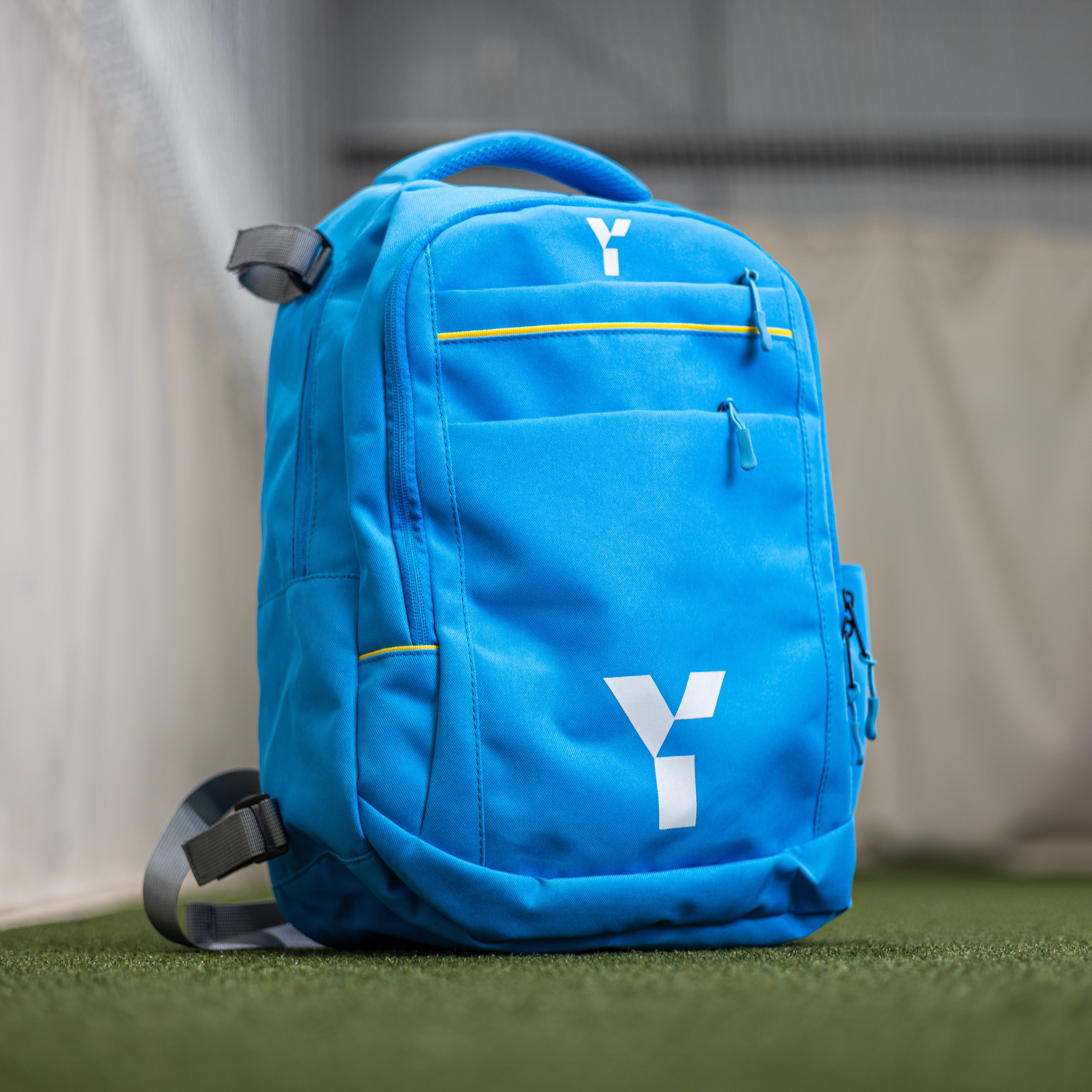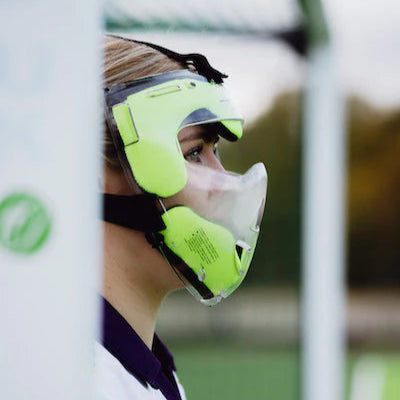Which Field Hockey Stick Should I Buy?
With so many hockey sticks available and the number of things you are asked to consider, deciding which hockey stick to buy can be overwhelming. We break it down for you and provide the complete guide on how to buy the right hockey stick for you.
A good starting point is to choose from a few easy options below.
- Buy the same stick you’ve always bought. It’s what you’re used to and are comfortable with, but does that actually mean it’s the most suited stick to you? Perhaps your game or the hockey stick world has changed and it’s time to look at other options.
- Come in store to our dedicated demo area where you can try over 100 demo sticks and get advice from our staff with over 50 years’ experience.
- Still need help or want to learn more about the technical bits? Then keep reading… We will cover the main questions we get from people deciding on which stick is right for them:
- What size of hockey stick is right for me?
- Hockey stick bows explained
- What are hockey sticks made of?
- How much does a hockey stick cost?
- What is the right hockey stick for my position?
What size of hockey stick is right for me?
|
Height (ft) |
Length of stick (inches) |
Shop by Size |
|
-3’ |
24” |
|
|
3’ – 3’ 5” |
26” |
|
|
3’ 6” – 3’ 10” |
28” |
|
|
3’ 10” – 4’ 1” |
30” |
|
|
4’ 1” – 4’ 5” |
32” |
|
|
4’ 6” – 5’ 0” |
34” |
|
|
5’ 0” – 5’ 4” |
35” |
|
|
5’ 4” – 6’ 0” |
36.5” |
|
|
6’ 0” + |
37.5” |
The above gives a really good starting point for choosing the right size of hockey stick.
For junior players we usually work off the measurement of floor-to-belly button in inches. This will give you a great marker of stick size needed. If you’re in between sizes always try and go a size up- we all know how quickly kids grow!
For adult sizes the above is a great guide but it also comes down to personal preference. You will often speak to 6ft+ giants who play with a 36.5” stick or the 5ft2 (on a good day) who don’t want to “bend down as far” who play with a 37.5” stick.
The extra inch between the two standard sizes of 36.5” and 37.5” will actually make very little difference and we’ve always found that within a training session or two you will naturally adapt your game to the stick you’re using.
We always recommend if you’re debating going up or down a size to pop in store with us, or try a teammate’s stick of that size. You can read more about which is the right size stick for you here.
Hockey stick bows explained:
Bows, bows and more bows! Where do you start with bows? Pro bows, mid bows, low bows, late bows, concave low bows, standard bows…. Did we miss any?!
All joking aside the world of hockey bows is a bit of mine field. It can even boggle us and even the different brands can call their bows different names.
Here’s an example of the different bows from Mercian to demonstrate their range of sticks. You can also read more in our blog.
Standard Bow:
A lot of junior hockey sticks and entry level adult hockey sticks will sit in this category. They are sticks that are quite straight and very forgiving so when you hit the ball you don’t mistakenly lift the ball. The downside to these is that working on more advanced skills such as drag flicking, aerials and 3D skills can sometimes be difficult.
Mid Bow:
Mid bows are where you will start to find a lot more entry level/mid-level adult hockey sticks. They have more bow than standard bow sticks but without the ability to flick the ball over your own head! A great option is you want to keep the ball on the pitch and also for hitting the ball.
Pro Bow:
The pro bow sits somewhere between a mid bow and a low bow. A more pronounced bow than the mid bows but often starting much more towards the middle of the stick meaning that the bow can be a little less aggressive when in use.
A fantastic bow for those transitioning into a higher level from an entry level adult hockey stick or for juniors moving away from junior hockey sticks into adult sticks.
Low Bow:
Now we start to get into the business end of hockey bows. The low bow is the most popular and common bow for adult hockey sticks. These have a much more pronounced bow which can be great (in the right hands) for helping with the more advanced skills like 3D and aerials.
Ultra Low Bow:
These bows are very similar to the late bow sticks, but the bow will start even closer to the hook end of the stick. These ultra low bow sticks are fantastic for the more advanced players who have the ability to control their hitting to keep a ball flat. This type of bow is also great for those who can or aspire to drag-flick, aerial and use 3D skills as a key part of their game.
Concave Bow/Drag-Flicking Bow:
Usually very similar to the ultra-late bow sticks but with a concave face to help the ball stay on the stick for longer and generate power. This concave bow is a specialised stick for drag-flicking.
A big bow is not a good or a bad thing, it’s about finding the balance and what feels right for you. If you’re not sure message us via live chat or come in store. Bigger is not always better, as you need to be able to handle it.
What are hockey sticks made of?
The materials that make a hockey stick vary depending on the level and price of the stick. For example, basic junior sticks will be made from wood, mid-range sticks will be some sort of composite and advanced sticks are heavily carbon.
We have many discussions with customers about carbon percentage. Customers often have an idea of carbon percentages that they want/need. What is interesting is that a number of leading brands now do not display their carbon % in sticks. Brands including adidas and Grays are amongst these.
Why?
Because there is a huge difference between carbon quality, and a lot more around how the stick in manufactured and the layup inside the stick rather than just a percentage.
A good example is that “brand 1” sells a 90% carbon stick for £100 yet “brand 2” sells a 30% carbon stick for £125. This shows us that there is a very different level in the quality of carbon used in either stick, and whilst there is not a ‘right and wrong’ in this situation we can sometimes get caught up on a number rather than all the other aspects listed above.
Rather than focusing on carbon % look more at the bow and feel of the stick (where you possibly can) and try to take some of the marketing ‘jargon’ with a pinch of salt!
How much does a hockey stick cost?
Let’s face it, price is always going to matter. Below we have tried to give you an easily digestible breakdown of what you get for your money when buying a hockey stick.
£10 - £30: A great starting point for any junior. At this price the sticks will usually be made of wood.
£20 - £50: Moving into fibreglass hockey sticks. A definite recommendation for us for any junior as there is more longevity and a far better feel for any young player.
£50 - £120: A greater % of carbon, roughly the more you spend the higher the %. This would be for advanced juniors that aren't quite at an adult size stick just yet.
£30 or less: We wouldn’t recommend it!
£30 - £75: You’ll start to see some brands incorporating carbon content in a stick at this price point. Fantastic for the younger players who are into a senior size stick, or those senior players who are just starting out or playing at a lower level.
£75 - £150: A good mid-range hockey stick price - you’ll start to see the carbon % increase significantly here.
£150 - £250: For the more advanced player or those looking to be able to produce a higher level of skill.
£250 - £400: The flagship price point for brands and for those hockey players looking for or needing the best product on the market. You’ll be looking at 80-100% carbon at these prices.
What stick is best for my position?
We often get asked questions like which stick is best for a defender? My child is a midfielder what stick should they get?
The honest answer is whilst many brands and retailers will try and steer you towards a specific stick, this is purely a marketing ploy! Choosing a stick on position isn’t the best question to be asking. Instead is how it feels to play with and ask yourself things like:
What length stick do I need? Focus on what is most comfortable for you to play with.
What level of hockey do I play / want to get to? Focus on composition/carbon of the stick.
What skills do I like to do during a game? Focus on the type of bow of the stick.
Are you ready to buy a hockey stick?
Sticks are a hugely personal choice, people often get over focused on the brand, bow and carbon %...
Here’s our advice:
- Come and try some of our 100+ demo sticks in-store
- Chat online with us HERE
- Try a friend’s stick
- Give us a call on 0191 447 4744
Browse the full range of hockey sticks now! You can also read about the best hockey sticks for beginners.































